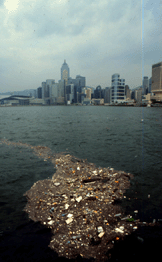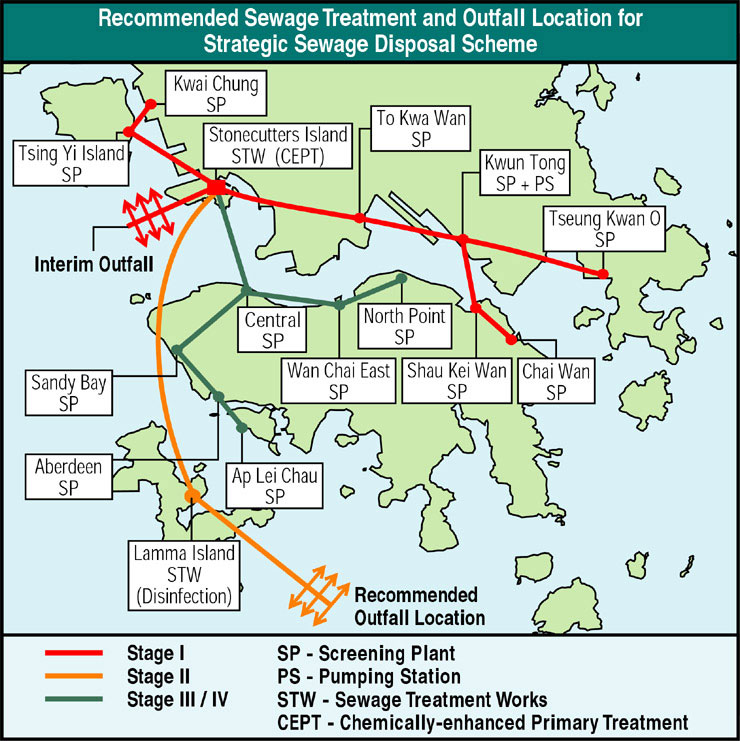Water is a potent symbol of Hong Kong's success, and of its environmental pressures. The water flowing through Victoria Harbour carries the trade that has boosted phenomenal economic growth. However, simultaneously, it also carries the sewage of millions that has led the "Fragrant Harbour" to take on a whole new meaning.
 |
Photos extracted from website of "Civic-Exchange" (A highly recommended Internet-based environmental think tank) |
 |
About 1.5 million tonnes of sewage is dumped daily into the Victoria Harbour, with only perfunctory treatment to remove solids. On the other hand, the Harbour is also under high pressure of reclamation for acquiring for Hong Kong urban development. Being scare of land resources, Hong Kong relies on reclamation for her development. Some 3,600 ha of land has been reclaimed since 1960, and by the early 1970s, the natural coastal line fringing Victoria Harbour has been almost completely reclaimed. Over the years, the Port and Airport Development Strategies (PADS) and Metroplan reclamation, plus further reclamation at Kowloon Point and South-East Kowloon have resulted in the reduction of Victoria Harbour area and decrease in volume of water flow through the Harbour by around 20 %.

The modification of hydrodynamic regime reduced the tidal flushing and assimilative capacity of the Harbour, and thereby augmenting the pollution problems due to sewage discharge. It is revealed by the trends of declining dissolved oxygen content and rising bacterium E-coli in Victoria Harbour in recent years. For detail of Hong Kong marine water quality, please refer to the EPD's annual Marine Water Quality reports on-lien available at<www.info.gov.hk/epd/water/marine/index.html>

¡@
Apart from the Victoria Harbour, another critical pollution hotspot is the Inner Deep Bay, which is a "Wetland of International Importance Especially as Waterfowl Habitat" under the Ramsar Convention in September 1995. But the area is found to be suffering from high levels of bacteria, total nitrogen and low levels of dissolved oxygen <www.info.gov.hk/epd/water/marine/index.html>. The decrease in dissolved oxygen is also a threat to its neighbouring sensitive vulnerable receivers, including Mai Po Nature Reserve, which is another internationally important Ramsar Site, and the oyster culture at Lau Fau Shan.
